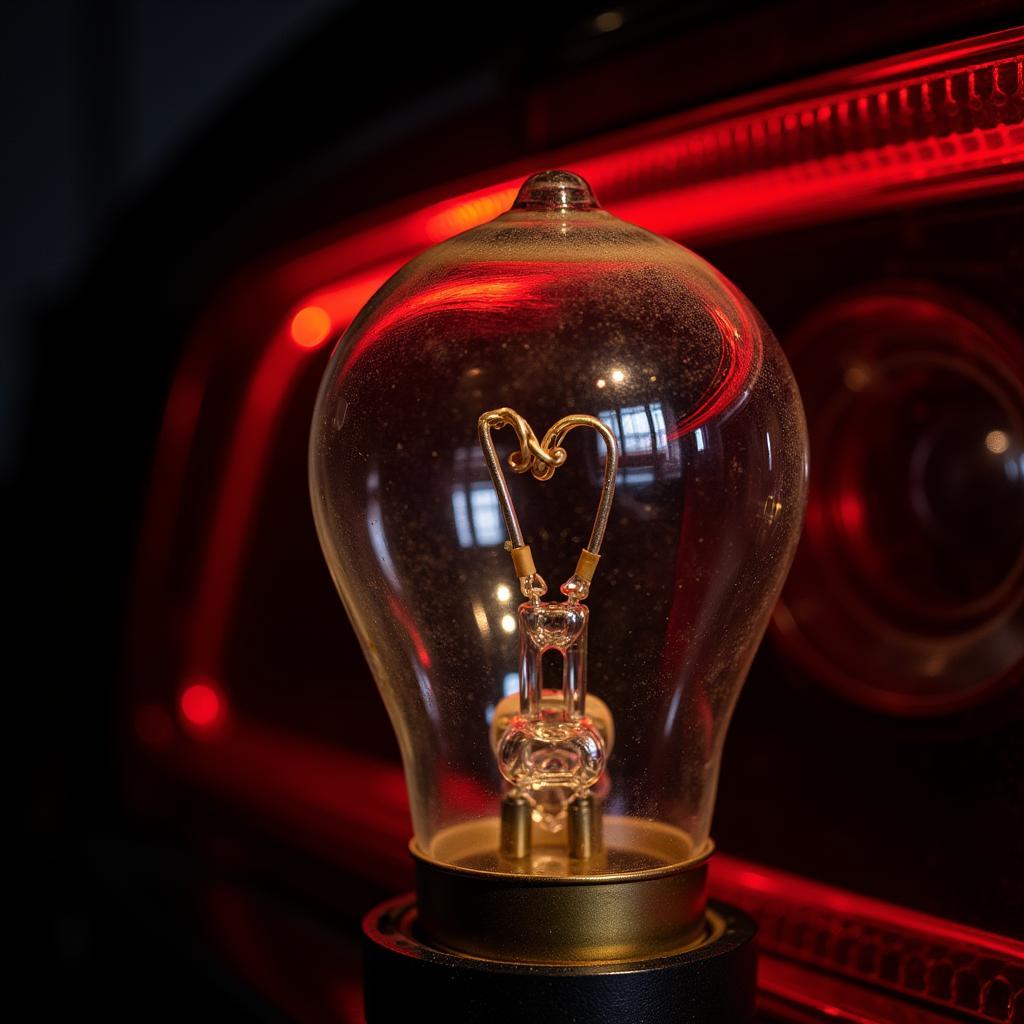A dead car battery can be incredibly frustrating, especially when it happens suddenly. If your car battery dies instantly, it signals an underlying issue that needs immediate attention. This article will guide you through the common causes, troubleshooting steps, and potential solutions for a car battery that dies instantly.
Why Does My Car Battery Die Instantly?
Several factors can contribute to a car battery dying instantly. Understanding these causes can help you pinpoint the problem and implement the right solution.
Faulty Alternator
The alternator is responsible for recharging the battery while the engine is running. A malfunctioning alternator won’t charge the battery, leading to a sudden loss of power. Symptoms of a bad alternator include dimming headlights, flickering dashboard lights, and strange noises coming from the engine compartment.
Parasitic Drain
A parasitic drain occurs when an electrical component continues to draw power even when the car is off. This can slowly drain the battery over time, eventually causing it to die instantly, seemingly out of the blue. Common culprits include interior lights, faulty wiring, or aftermarket accessories.
Corroded Battery Terminals
Corrosion on the battery terminals can prevent the battery from properly connecting to the electrical system. This can lead to starting issues and ultimately a dead battery. Clean terminals are essential for a healthy battery.
Bad Battery
Sometimes, the simplest explanation is the correct one. An old or damaged battery might simply be at the end of its lifespan and unable to hold a charge. Extreme temperatures can also shorten a battery’s life.
Troubleshooting a Car Battery That Dies Instantly
If your car battery dies instantly, here’s how to troubleshoot the problem:
- Check the Battery Terminals: Inspect the battery terminals for corrosion. If they appear corroded, clean them with a wire brush and a mixture of baking soda and water.
- Test the Alternator: Use a multimeter to check the alternator’s voltage output. A healthy alternator should produce around 14 volts when the engine is running.
- Check for Parasitic Drain: Use a multimeter to measure the current draw with the car off. A significant current draw indicates a parasitic drain.
- Load Test the Battery: A load test checks the battery’s ability to hold a charge under stress. This test can determine if the battery is faulty.
 Testing a car battery's voltage with a multimeter to diagnose charging problems.
Testing a car battery's voltage with a multimeter to diagnose charging problems.
Solutions for a Car Battery That Dies Instantly
Based on your troubleshooting, you might need to implement one or more of the following solutions:
- Replace the Alternator: If the alternator is faulty, it needs to be replaced. This is best done by a qualified mechanic.
- Eliminate Parasitic Drain: Identify and fix the component causing the parasitic drain. This might involve replacing faulty wiring, disconnecting aftermarket accessories, or replacing a malfunctioning electrical component.
- Clean or Replace Battery Terminals: If the terminals are corroded, clean them thoroughly. If they are damaged, they might need replacing.
- Replace the Battery: If the battery is old or damaged, it’s time for a new one. Be sure to choose the correct battery type and size for your car.
Expert Insights from John Miller, Automotive Electrical Engineer
“One common mistake people make is ignoring the early warning signs of a failing battery, like slow cranking or dimming lights. Addressing these issues promptly can save you from the frustration of a suddenly dead battery.”
Conclusion
A car battery that dies instantly can be a sign of various underlying issues, ranging from a faulty alternator to a simple parasitic drain. By following the troubleshooting steps and implementing the appropriate solutions outlined in this article, you can get your car back on the road and avoid future battery problems. Don’t let a dead battery leave you stranded – take proactive measures to maintain your car’s electrical system.
FAQ
- How long does a car battery typically last? Typically, car batteries last between 3 and 5 years.
- Can I jump-start a car with a completely dead battery? Yes, you can jump-start a car with a dead battery using jumper cables and another vehicle with a working battery.
- How can I prevent my car battery from dying instantly? Regularly check and clean the battery terminals, ensure your alternator is functioning correctly, and address any electrical issues promptly.
- What are the signs of a bad alternator? Dimming headlights, flickering dashboard lights, and strange noises from the engine compartment are common signs of a bad alternator.
- Is it safe to drive with a bad alternator? Driving with a bad alternator is not recommended, as it can lead to a complete loss of power and leave you stranded.
- How can I test my car battery at home? You can test your car battery at home using a multimeter.
- What causes a parasitic drain? A parasitic drain is caused by an electrical component drawing power even when the car is off. This can be due to faulty wiring, aftermarket accessories, or a malfunctioning component.


